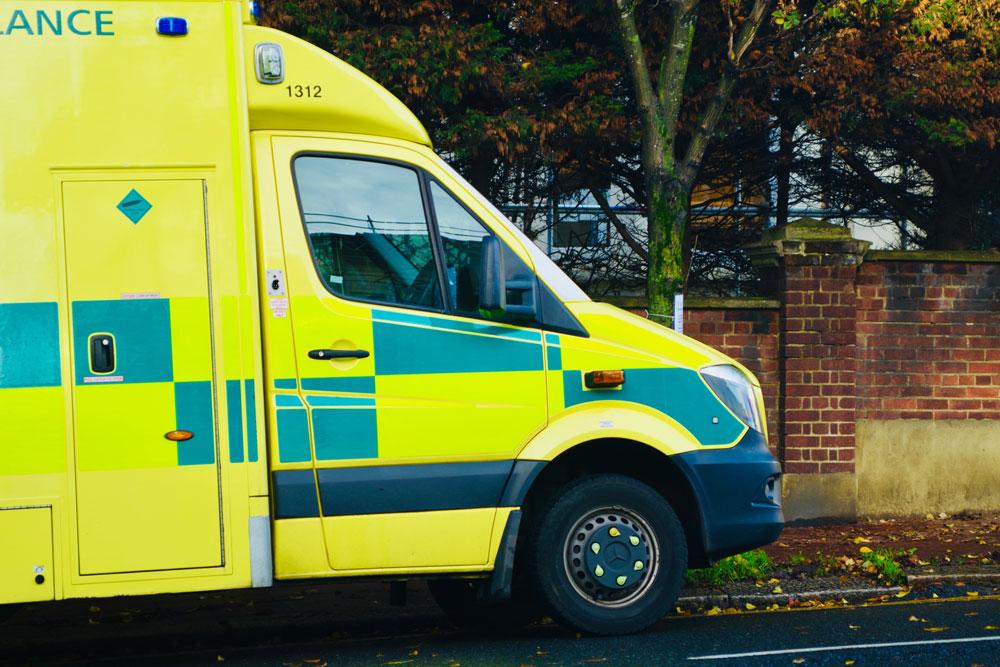In this blog, Andrew Smith, Pillar Lead Research at CCS - Environment and Sustainability, reveals some of the ways the NHS can achieve sustainability
To achieve sustainability within the NHS will feel like moving a mountain with a teaspoon, it is possible but it will be a long and hard journey. The tasks are endless each with their own unique problems and firmly underlined with the central core value that what they do is save lives. A change can be ideal in a sustainable target, but detrimental to the area in their role in patient care.
While looking at what needs to be done it is often thought that answering in-depth riddles on the creation of the universe could be easier. When you look at the NHS as a single entity the task becomes too large. Instead, by breaking it down into the component parts, it helps to make it less intimidating, but what these components are is yet to be decided.
When you mention the NHS to anyone the initial thought is the large trust led hospitals, but what about all of the health centres providing local GP care to the community, the nurses, care professionals and admin teams that keep these areas running? Let’s look at one of these areas as an example of what could be changed.
The first thing that people think of when it comes to carbon net-zero is power. Looking at this from one aspect would be a move to a green sourced power supply, maybe including carbon offset certificates. In an ideal world, it would be a mix of solar and air source heat pumps, if the property is in a more rural area and has the available space then a small wind turbine would complement the building’s requirement. Theoretically, this could create an off-grid generation of supply, albeit I would never suggest that a health centre is fully off-grid the risk is too high.
Lights, computers, administration and waste are all areas that need to be readdressed. Lights can be changed to LED systems that have a much lower per hour cost and better longevity, plus they are much brighter than previous energy saving bulbs. With the computer systems, it is more common to see medical notes on a computer system compared to the old style paper records. Laptops are more environmentally friendly than desktop systems but they do have a theft risk connected with them. Having a server system located off site would help to reduce the building CO2 further. One aspect of administration is the number of paper letters sent to patients. The majority of citizens now have email addresses so a simple email would be ideal and at zero cost.
There are the exceptions where some will need to continue with physical letters, but as time moves on more and more are used to email as a main source of communication.
Hospital sites can encompass all of the same plans as a health centre, but one area that requires additional thinking is waste, which is getting more attention in recent times. Would it not be better for the standard and recyclable waste to be collected from one location avoiding the need for the collection lorry to travel around a site? Offensive waste is a different matter entirely and needs a country wide approach.
A circular economy
None of the ideas mentioned here are new; the NHS has multiple areas of interest and targets such as all NHS buildings must have LED lights by 2030, low emission generators and cooling systems with emergency generators being battery powered by 2025, along with electric vehicle charging stations in all car parks again by 2025. The plans are in place, the technology is available and getting better all the time.
It is no surprise that we all have to look towards a circular economy in order to stop the reliance on a limited resource of natural materials. How we can achieve this in an organisation that has to dispose of some of its waste for infection control is another matter. In light of recent events with the Covid-19 outbreak and the quantity of PPE that was required and then destroyed, it is understandable that calls for washable PPE are the way forward but the question remains how can this be controlled in a medical arena? This is where we have to embrace change, to encourage innovation with clear routes to market. There is no doubt that there are companies that can and have developed washable PPE, but will this product have additional requirements around it? Will it require specially developed washing machines, with new detergent? And what would the wastewater be like, would it be safe or would that then have to go through a cleaning process? As always in sustainability, every question is subsequently answered by two more questions.
Right now it is procurement’s time to shine, the world has changed and one thing that Covid-19 has brought to the attention is being greener, the call for a greener rebuild and how air quality improved during the lockdown. Procurement can help achieve this target goal but it is down to all of us to look into each project and see how it can be improved, we need to stop the phrase of ‘business as usual’ and embrace the thought process of reimagining everything with a green sustainable tint to it.
Data produced by both the NHS and the British Lung Foundation (BLF) have shown significant improvements in air quality during the lockdown, that asthma sufferers found their symptoms were better and that we all noticed a cleaner environment. The BLF reported: “One in six people living with lung conditions in the UK say their symptoms have got better because of the fall in toxic air pollution since lockdown.”
The domino effect
This is where the domino effect can come into play, by all of us making a transition to a more sustainable cleaner lifestyle it eases the burden on the NHS. Moving to walking or cycling to work, reducing the journeys taken with cars by working from home, purchasing electric vehicles and clean air zones, all of which will not just reduce harmful emissions and particulates but will help with the overall health of the citizen, which will in turn reduce the demand on the NHS.
Prevention instead of cure is a phrase that has done the rounds a number of times, and sustainability is exactly that. A council making a decision to close off an area to traffic to reduce pollutants can have a positive domino effect on the area, as the chances of citizens young and old developing breathing related issues can drastically reduce, and all of the health care required for this illness is no longer under the same pressure, so less trips to a hospital will mean less car journeys, along with all of the administration for the appointment and subsequent care.
A two pronged approach to NHS sustainability is going to be required. Yes there are the standard changes required like the LED lights and battery powered generators, but a wider picture has to be taken into account by the local area, by making the towns and cities cleaner and sustainable the effect will be felt by the local NHS which will by proxy become more sustainable.
To see our wide range of solutions for the NHS please visit our dedicated web page. If you want to find out more about making responsible buying decisions with CCS please visit our brand new web page.





